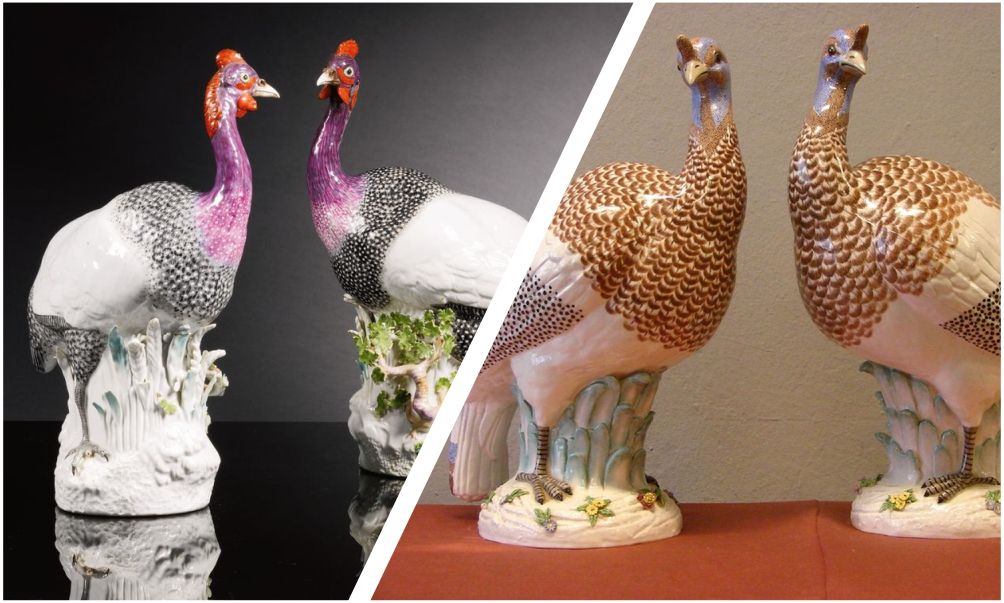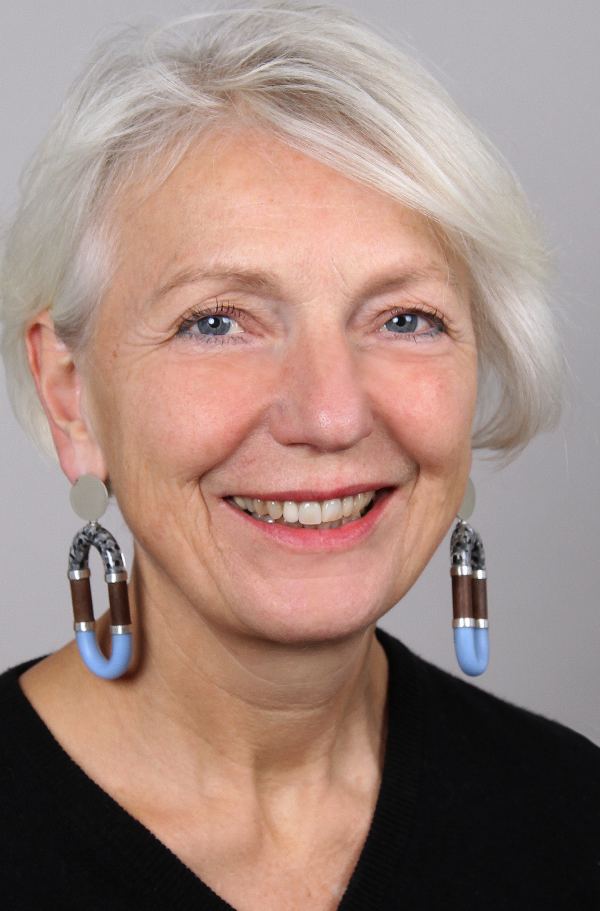
You are interested in Meissen porcelain figures, but not certain which figure is worth more than another? The difference in price are in the differentiation between an original, a fake and the variations on the original model.
- The Definition of an Original and a Fake
- The Differencebetween an Original and a Fake explained upon Kaendler’s Meissen Guinnea Fowl
- Adulteration explained upon the example of Kaendler’s Lemon Basket
- Creative Copying of an artistic idea upon the example of Kaendler’sPantalone
- My Offer for Advice and Evaluation of Meissen Porcelain.
The Definition of Original and Fake
What is an original Meissen porcelain?
Each piece of porcelain which was made in the Meissen porcelain factory – irrelevant if it was made by the designer or artist himself or one of his assistants. Each cast out of the first mould differs from another. Please note the difference between casts from the first work-mould to those from later work-moulds.
Early and Late Meissen Originals
The figures made during the first 5 years after the first invention of the model show the artists intended message / symbolism. These are the most valuable. Later adaptations of the same model which were made 20 – 200 years later have lost the artists symbolism and their individuality. They were made in larger quantities and naturally have a lower value.
Fakes of Meissen Porcelain
Fakes were made when the original was a particularly successful model. The factory’s mark, the crossed swords in underglazeblue, is one of the most frequently faked factory marks. Fakes have hardly any commercial value and are not accepted in the antiques trade.
The Difference between an Original and a Fake upon the example of Kaendler’s Guinnea Fowl
In March 1737, Johann Joachim Kaendler designed a pair of Guinnea Fowl fort he Japanese Palace in Dresden. The life-sized animal sculptures in porcelain are very rare. As they are one of the most valuable models, the Meissen factory decided to make the magain during the 19th century, albeit not many. The famous French porcelain factory Samson which specialised in the copying of 18th century models of other porcelain factorie sproduced also Guinea fowls of original size. You can discover the differences by comparing the photographs shown here.
The colour of the porcelain pase of the Samson factory looks grey and hard in comparison to the creamy white paste used by the Meissen factory.
The Falsification using the example of the Meissen Lemon Basket
A counterfeit is when an original Meissen porcelain figurine has been modified in order to produce it more cheaply. Both the Meissen manufactory and other manufactories produced similar-looking porcelain figurines, which I consider to be counterfeits of the original. These have neither value as collector’s items nor great financial significance, because none artistic idea was realized; instead, an old model was simply reissued.
The most common form of falsification is the subsequent painting of old white porcelain. Using the example of Joh. J. Kaendler’s extremely rare Meissen lemon basket from 1738, I will show the difference in the painting. The subsequent painting is much simpler and not as imaginative as the original.
Details of the Original and theLater Copy
The eagle’s head on the lemon basket made in the mid 18th century and 100 years later
Creative copying of an existing artistic idea
Brilliant artistic ideas have always been copied throughout art history. Young artists take a model and reinterpret it. The resulting new work is neither a forgery nor a falsification, but a new original. The new works have beeninfluenced and changed by the individuality of the artist and the spirit of the times.
Creative copying shown upon the example of the figure of Pantalone
Here I explain the character of Pantalone in detail so that you can better understand the interpretations of the various artists.
Pantalone is the name of a the atrical character who can play his role in different variations. He was an integral part of the Italian Commedia dell’arte, a tradition of groups of actors who traveled throughout Italy and France to perform the irrelatively freely structured plays. Each role had a prescribed character, but could be reinterpreted daily – in consultation with his colleagues, of course
Pantalone is an old, business-minded, yetstingy, usually lovesick, and always deceived old man with a goatee, who appears in garish clothes (often yellow slippers, a reddoublet, and tightred tights) and a black cape. His purse is clearly visible and the sole object of desire for the young maids.
The porcelain artist knew of course not only the engravings by J. Callot but also some of the many paintings on this subject. He based his porcelain models on these theatricul charact. Pantalone is shown keenly bent forward. The widower would like to seduce the young servant but ends up being deceived by her. Acting as the father, he wants to be involved in all matters of romance of his daughter (Dr. Bartolo in „Barber of Seville“).
The market value of these very different models varies depending on the relevant circle of collectors.
Evaluate Meissen porcelain figurines yourself or have them evaluated?
Do you now have a better overview and can you better classify your own figures? But be careful, can you spot the restoration trap? Restorations carried out over the past 25 years are invisible to the untrained eye.
Do you know the value of your porcelain figure?
I am happy to answer any questions you may have and provide advice and estimates. My hourly rate is €300 including VAT.
As a publicly appointed and sworn expert of the Chamber of Industry and Commerce, I am happy to assist you with:
- Estate appraisals, inventories
- Advice on the purchase and sale of applied art in porcelain and faience

Angela Gräfin von Wallwitz
Publicly appointed and sworn expert of the Chamber of Industry and Commerce











